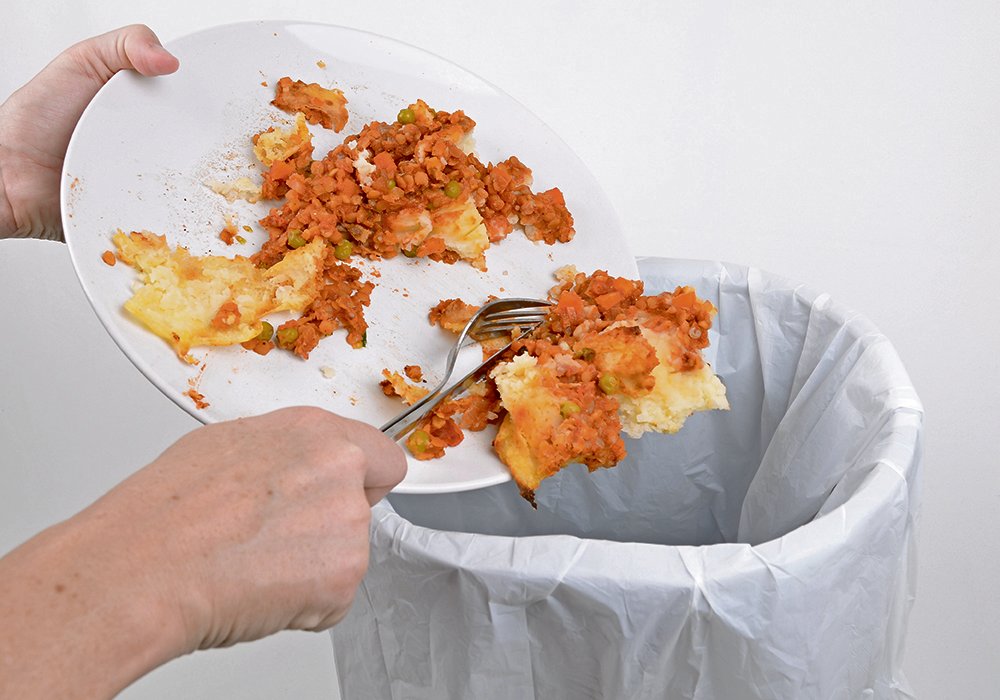New report finds 58 percent of food is wasted

University of Calgary researchers determine that most waste occurs at the consumer level rather than in agriculture
Canadians need to change their culture of disposability and stop wasting an estimated 58 percent of the country’s food each year, says an expert.
The annual value of this wasted food has been estimated at about $49.5 billion, said Kerri Holland, an affiliated researcher at the University of Calgary’s Simpson Centre for Agricultural and Food Innovation and Public Education.
“And researchers have estimated that if we include resources that were wasted or inputs that were used, the value is actually well over $100 billion that we’re wasting within our food system.”
Holland, who spoke at a recent webinar hosted by the centre, wrote the briefing paper, Strengthening Canada’s Food System by Reducing Food Waste, which was released the same day.
During a question-and-answer session when asked if governments should implement a food waste tax, she said research has shown incentives are better than punishments at motivating people and businesses.
“However, governments also need to consider that policy instrument, too, because if changes can’t be made through incentives, then they of course need to consider more of those restrictions or kind of punishments in terms of taxes, I guess.”
Although food waste is a complicated problem, one of the biggest sources is consumer behaviour, she said.
“And I think a main reason for that is not only how they value their food, but also that they’re not really aware of just how much they generate in terms of waste.”
It’s hard to reconcile concerns about the rising cost of food with the fact Canadian households each waste an average of $3,500 per year of their groceries, said Holland, who is also the president of KL Holland Consulting in Edmonton.
The COVID-19 pandemic caused disruptions in the food supply chain in 2020 that led to grocery store shortages, sparking fear and outrage that was partly directed at farmers.
“I’m sure that we can all remember the media’s recording of millions of gallons of raw milk being dumped, produce crops destroyed, records of livestock having to be euthanized… there were media reports and surveys done that the majority of Canadians actually felt farmgate waste should be made illegal.”
However, farmer and commodity organizations are some of the biggest contributors to food banks, said Holland. “And I don’t think a lot of Canadians are aware of that.”
Farmers are one of the lowest sources of waste in Canada’s food supply chain at about six percent, she said. Waste at this level is largely being driven by external factors, such as aesthetics and grading standards, which determine what producers harvest and then discard, she added.
There is a “huge disconnect between consumers and where their food comes from… consumers expect cheap, abundant, aesthetically perfect and convenient food, and our food system has really evolved to meet that demand.”
It serves a culture of disposability that needs to be countered through better education about not only the financial, but also the social and environmental costs of wasting food, she said.
“Not only are we wasting our resources, but in landfills, organic waste is breaking down and producing methane, which is 25 times more potent than carbon dioxide in terms of its global warming potential … our landfills account for about 20 percent of our nation’s methane emissions each year, as well as about eight percent of our greenhouse gas emissions.”
Holland said confusion about differing types of date labels on food, and the way companies are choosing to implement them, is part of the problem. It has caused Canadians to be “wary of buying or consuming food products that are close to or are slightly past their best before or sell by or expiry date, and this leads to consumers — but also retailers — to prematurely dispose of perfectly edible products.”
People need to be educated to make better choices through measures ranging from social media to school programming that promotes things such as meal planning and food literacy, she said.
“In recent years, we see more and more cooking shows that are challenging contestants to use random or leftover ingredients. We see highly marketed recipe books like (the) IKEA ScrapsBook, and social media posts all over the internet showcasing ugly and misfit food, and these will provide information about how we can maybe be more creative with our leftovers or random ingredients in our fridge.”
The trend is creating opportunities for agri-food entrepreneurs, she said, pointing to products such as dried fruit made from misfit produce and beer created from day-old bread.
The federal government committed $20 million last year to the Food Waste Reduction Challenge. It aims to fund innovators with technologies that can either extend the life of food, or transform food that would otherwise be wasted or lost, said a statement by Agriculture Canada.
The Enterra Feed Corp. north of Calgary received $6 million earlier this year under the federal AgriInnovate program. The company uses recycled food from farms, grocery stores and food production facilities to raise black soldier flies for fertilizers and animal feed.
Scientists are also working on reducing food waste through seed genetics, creating new products such as the Arctic apple and the Innate potato, said Holland.
“Both of these carry traits that are resistant to browning and bruising, which are two of the main reasons why produce is discarded at the transport level, in retail stores and of course in our household.”
However, there is widespread stigma about food from genetically modified organisms, she said.
“In fact, a survey a couple years ago found that over 61 percent of Canadians regard GMOs as unsafe, or they’re unsure of whether they’re safe to consume, so therefore it’s really going to be essential for governments and scientists and businesses to really help educate the public about the safety and the benefits of using GMO products.”
Source: www.producer.com

